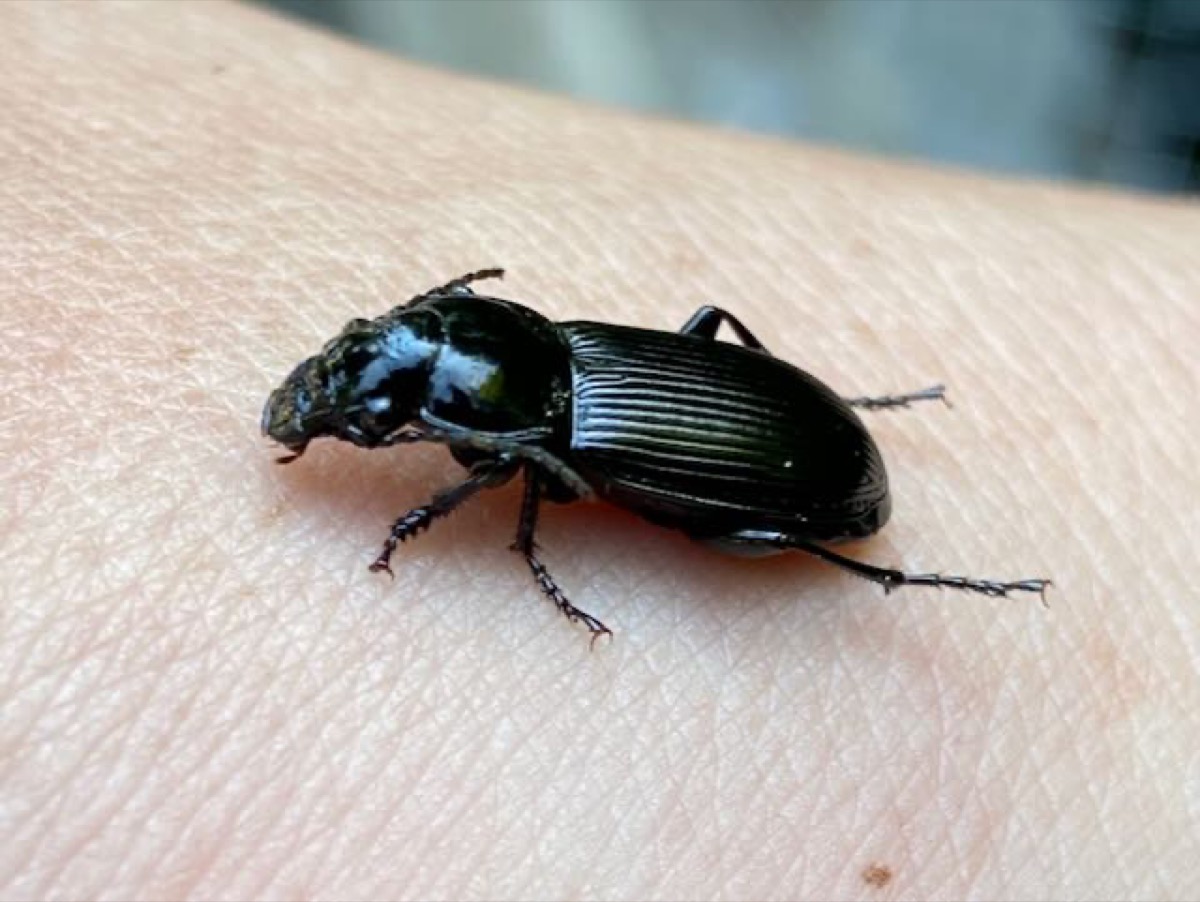General Information
Carabidae, or ground beetles, make up one of the richest and most widespread beetle families. With over 40,000 described species worldwide, they are found in nearly all terrestrial environments, from vegetable gardens to deep forests.
Main Characteristics
- Elongated body, often flattened and streamlined for running.
- Generally dark coloration (black, brown), but some species have metallic reflections.
- Powerful legs, built for fast running.
- Well-developed mandibles, suited for predation.
- Reduced wings in many species: many are flightless.
Habitat
Ground beetles live primarily on the ground, in:
- forests, meadows, agricultural areas, gardens,
- under stones, in moss, beneath dead leaves, or inside stumps.
They avoid direct light and are often active at night (nocturnal), though some species are diurnal.
Diet
All adult ground beetles are predators, feeding on:
- insects,
- larvae,
- worms,
- slugs…
Some ground beetle larvae are also predatory. This makes them valuable allies to gardeners.
Defense and Specificities
- Some ground beetles can emit irritating chemical substances as a defense mechanism.
- The famous bombardier beetle ejects a hot, irritating jet (a mix of hydrogen peroxide and hydroquinones).
- Some show subtle sexual dimorphism (slightly different shape or size between males and females).
Photographic Interest
Ground beetles are favorite subjects in macrophotography:
- wide variety of textures (smooth, sculpted, striated),
- fascinating metallic colors (green, blue, bronze),
- often found in their natural state, with no need to move them,
- interesting behaviors to document (hunting, movement, interaction with the environment).
🧭 Suggested Navigation:
🌿 Did you know? Due to their appetite for pests, ground beetles are sometimes used in biological control in crops, especially against slugs, worms, and harmful larvae.
The Carabidae – Ground Beetles
Characteristics
Predation:
Carabidae are primarily predators, feeding on other insects, spiders, and even small mollusks. Their powerful mandibles and hunting-adapted mouthparts make them effective predators.
Morphology:
They show a wide range of shapes, sizes, and colors. Their bodies are generally flat and elongated, with filament-shaped antennae. Some have colorful elytra, while others are darker for camouflage.
Habitat:
Carabidae can be found in a range of habitats, from forests to wetlands, as well as fields and meadows. Some are adapted to terrestrial life, while others are found in aquatic environments.
Behavior:
Ground beetles are often active at night and hide during the day. Many can fly, although some are wingless (unable to fly). They are usually fast and agile, helping them to catch prey.
Ecological Role:
Carabidae play an important role in ecosystems by controlling pest insect populations. Their predation helps maintain ecological balance and limit pest outbreaks.
Economic Importance:
Some Carabidae are also used as indicators of environmental quality and biodiversity in ecosystems. Their presence or absence can signal the health of a given ecosystem.
The Genera I Have Encountered
Carabidae
- [[#Pterostichinae (subfamily of Carabidae – Ground Beetles)]]
- [[#Genus Pterostichus]]
- [[#Pterostichus melanarius]]
- [[#Genus Pterostichus]]
Pterostichinae (subfamily of Carabidae – Ground Beetles)
Genus Pterostichus
Pterostichus melanarius
| Order | Coleoptera |
|---|---|
| Family | Carabidae |
| Genus | Pterostichus |
| Species | melanarius |
| Common name | Garden black ground beetle |
| Author | Illiger |
| Year of identification | 1798 |
| Protected | Not protected |
| IUCN Category (2001–2003) | Not listed |
| Habitat | |
| Diet | Carnivore and scavenger |
| Color | shiny black, except for the claws and sometimes the tibial spurs which are brown |
| Antennae | short |
| Pronotum | widened marginal groove at the back, not sinuate |
| Elytra | striated |
| Legs | |
| Range | Europe, Asia, North America |
| Size min | 15 |
| Size max | 20 |
| Period start | March |
| Period end | September |
